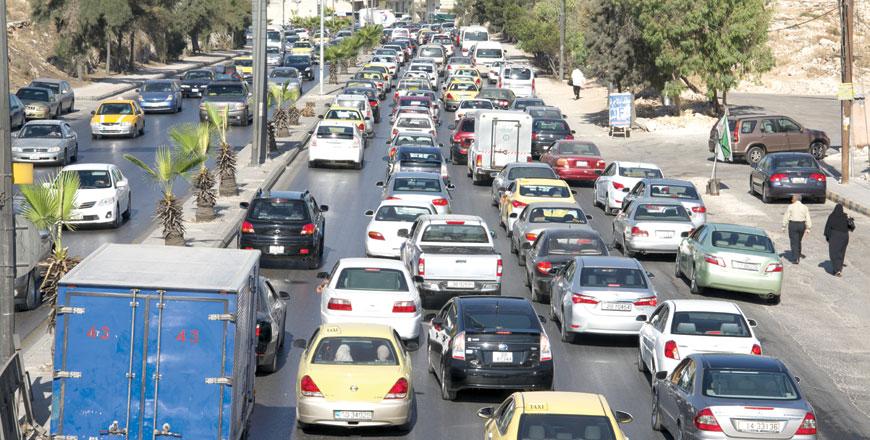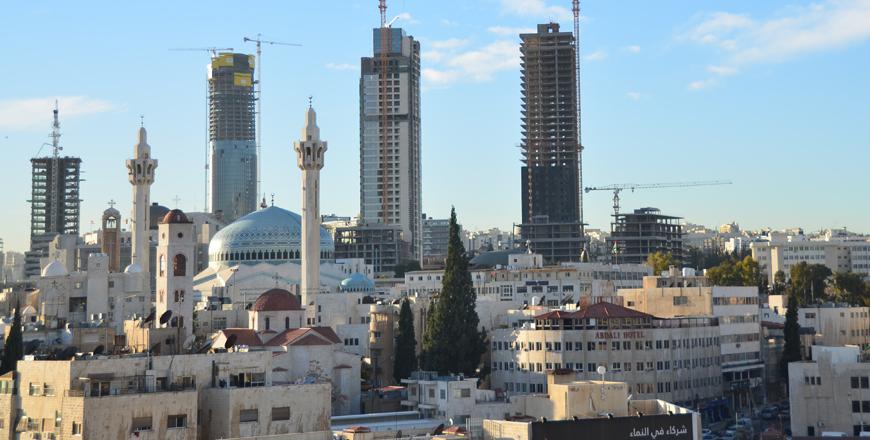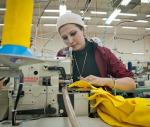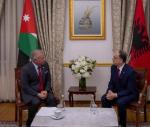You are here
Planners see better traffic flow in Amman in two years
By Omar Obeidat - May 19,2016 - Last updated at May 19,2016
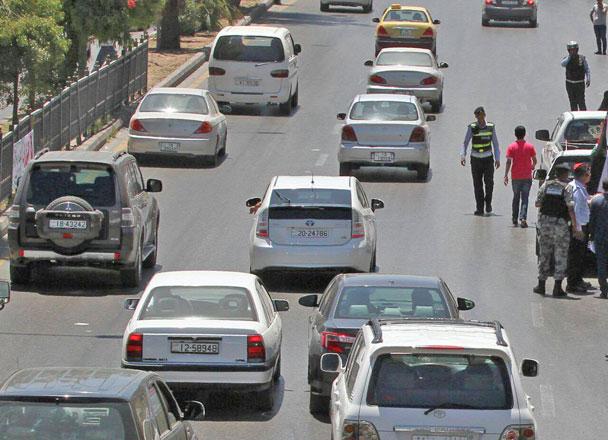
The issue of traffic jams in the capital in the past years has been a ‘vexing problem for residents’, according to transport experts (Photo by Osama Aqarbeh)
AMMAN – City planners are optimistic that in 2018 motorists in Amman will spend less time sitting in traffic as a major public transport project, among other solutions will be ready.
The issue of traffic jams in the capital –– whether in peak or off-peak hours –– in the past years has been a "vexing problem for residents", according to transport experts who blame the "dilemma" on the lack of adequate public transport system that makes residents opt to travel in private vehicles.
According to official figures, Amman is home to nearly 42 per cent of the Kingdom's population with over 4 million residents.
This number could be higher during daytime as thousands of people enter the city from other governorates because their work is based in Amman, according to Ayman Smadi, executive director of the transport and traffic department at the Greater Amman Municipality (GAM).
Transport experts see that the current situation on Amman streets would last for years because delays in carrying out proper public transport systems have made solutions more expensive and more difficult.
But Smadi believes that motorists in the city will see a major difference in two years.
“I’m very optimistic in 2018 as it will be a turning point for the traffic congestion problem,” he said.
Amman Mayor Aqel Biltaji said during a visit to the Central Traffic Department on Wednesday that 2018 will bring solutions to gridlocks in Amman with major plans to be implemented, the Jordan News Agency, Petra, said.
BRT
Smadi said the Bus Rapid Transit (BRT) project will be ready in 2018, adding that the multimillion major project will connect major streets in Amman and will reduce the number of cars on the roads as commuters will choose to take frequently-run and traffic-free buses rather than travelling in their private cars to work or to universities.
Construction work at the BRT is scheduled to start in the coming few weeks, he said.
The scheme entails operating premium, high-capacity buses that can carry more than 120 passengers and run on a three-minute frequency during peak hours on segregated lanes along Amman’s busiest corridors.
Expanding the fleet
The GAM official said the municipality will float a tender in two weeks to operate 100 new large buses in Amman in accordance with advanced operation standards.
Increasing the fleet of buses with decent vehicles and the project of free-of-charge shuttle buses that go to areas that struggle with congestions, such as downtown, would ease jams in the city, he said, adding that GAM has also started to establish car parking lots in traffic-congested areas.
“These parks aim at preventing double parking in major streets in addition to encouraging motorists to leave their cars and take shuttle buses to areas where streets are plagued with jams,” he added.
Long-term planning vs instant solutions
Transport expert Jamil Mujahed said the “dilemma” of traffic jams in Amman may continue for at least the coming five years even if the BRT is ready before that.
The government has complicated the traffic jam issue when it reduced taxes on cars in 1999 and when it allowed the import of used cars, said Mujahed, the former director general of the Land Transport Regulatory Commission.
“In the past decade, the annual increase in the number of cars in Jordan exceeded 7 per cent, while streets were designed decades ago to accommodate a certain number of vehicles,” he told The Jordan Times on Tuesday.
Amman should be equipped with spacious parking lots to prevent double parking in the streets, he said, calling for harsher penalties against random and double parking to be in line of the traffic law, which he said is sometimes not enforced properly.
The municipality should also consider repairing sidewalks in the city to encourage people to walk around instead of driving, and allocate special lanes for bicycles.
“Sometimes you find people drive just for few hundred metres to a shop, while if there were decent sidewalks they may walk such distances,” he noted.
One of the reasons that made owning a car in Jordan, according to Mujahed, a good option is the easy credit facilities by banks for car purchases.
Hazem Zureikat, another transport expert, echoed similar views, saying the current transport system in Amman is “poor and inadequate” as it prompts people to use their own cars.
The BRT may be part of the solution as it could carry some 7,000 passengers an hour, Zureikat said, noting that GAM and the police traffic department should work together to manage the road networks in Amman.
“Sometimes traffic officer solves congestions in one place by moving it to another place,” he said, urging GAM to remove circles in major streets, such as the Interior Ministry Circle, Youth Sports Circle and Jubilee Circle, and install traffic lights to improve the flow of cars.
“We cannot rely on police to control traffic in Amman, while ignoring programmed electronic devices,” he said.
Mujahed said the ratio of traffic officers to the number of cars in Jordan is one of the highest in the world because of bad planning; agreeing with Zureikat that circles in major streets should be replaced by traffic lights.
Smadi replied to the comments of experts by indicating that GAM is preparing studies on bottleneck spots, particularly in peak hours, noting that tunnels and bridges in addition to intersections are on the drawing board.
Motorists’ bahaviour
Motorists’ way of driving is sometimes a major part of traffic congestions in the capital, they all agreed.
Mujahed said many motorists drive crosswise instead of going direct, changing lanes frequently and recklessly.
Mujahed and Zureikat said only proper enforcement of law can change the behaviour of drivers.
Smadi said that traffic congestions on Amman’s streets cost motorists over JD1 billion annually as the money they pay on fuel wasted by idling cars.
Related Articles
AMMAN — Traffic jams on Amman's streets cost motorists around JD1 billion annually, according to an estimate by an official at the Greater A
AMMAN — The Greater Amman Municipality (GAM) on Monday announced a number of procedures to regulate traffic flow in Amman’s Abdali area.Ayma
The 22 new cameras that the Greater Amman Municipality (GAM) started operating on Monday on the capital’s streets registered 3,400 traffic violations on their first day, a GAM official said Wednesday.


